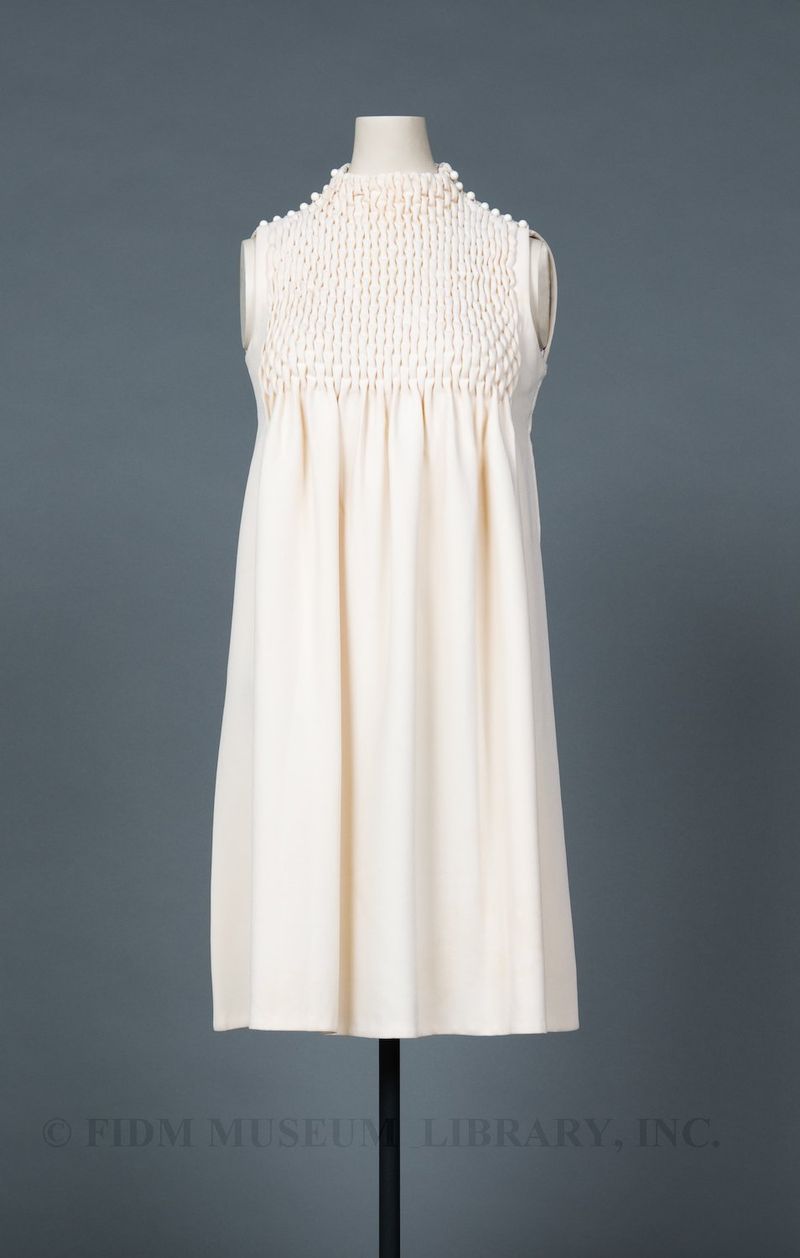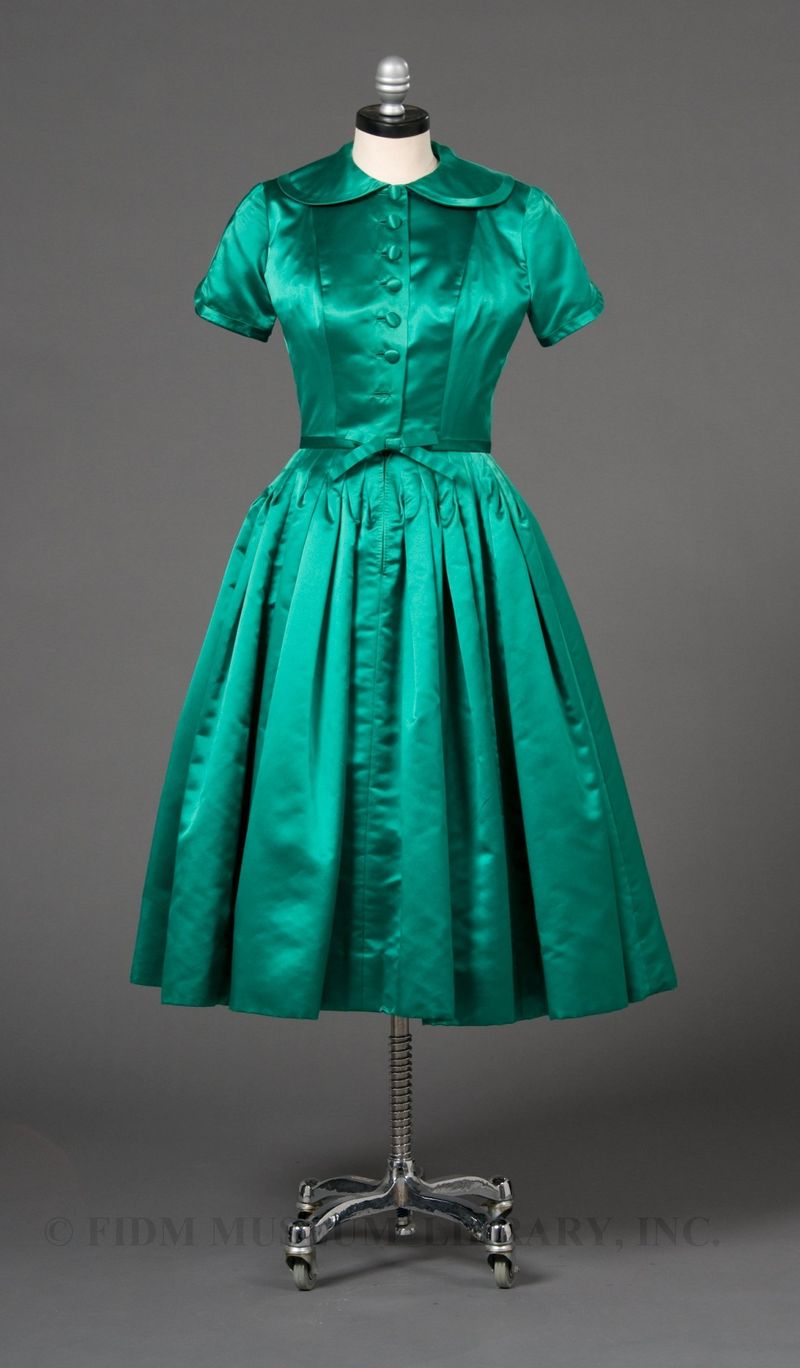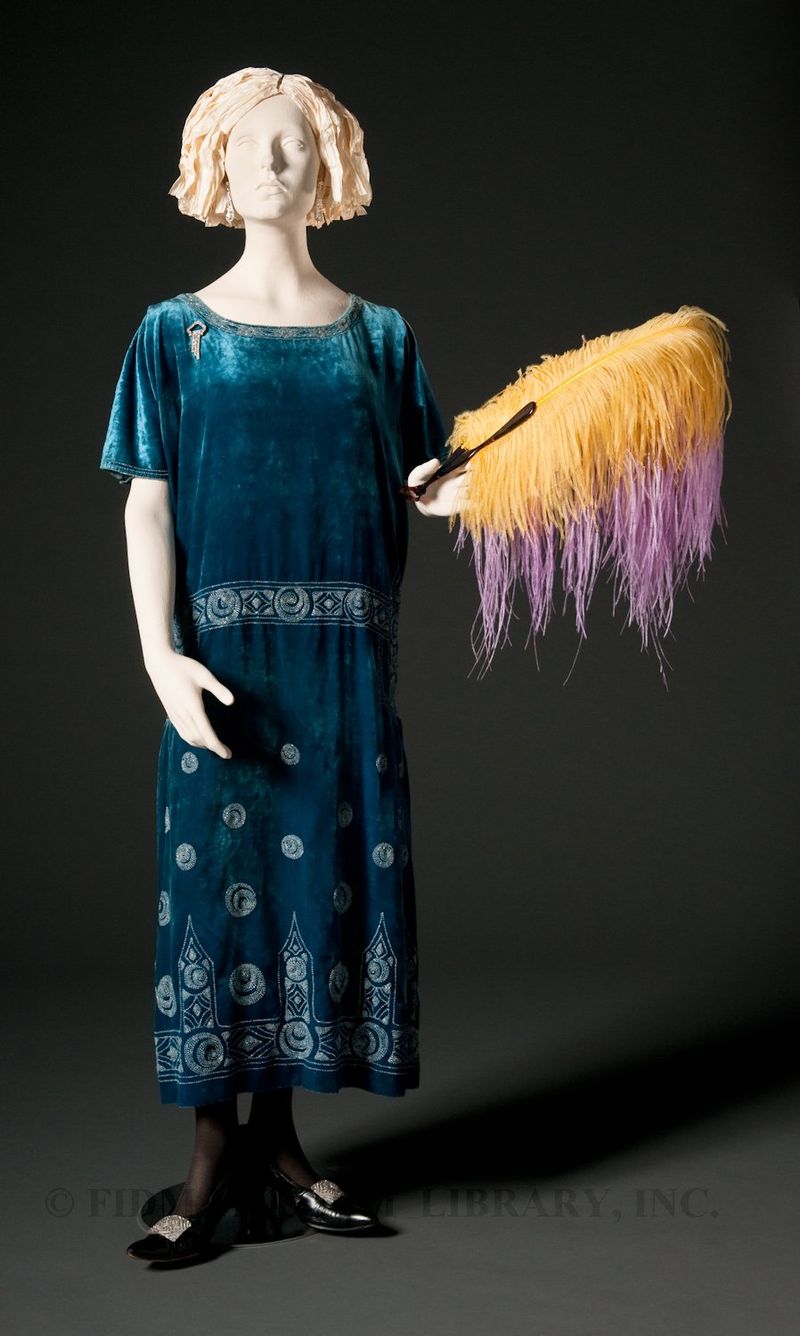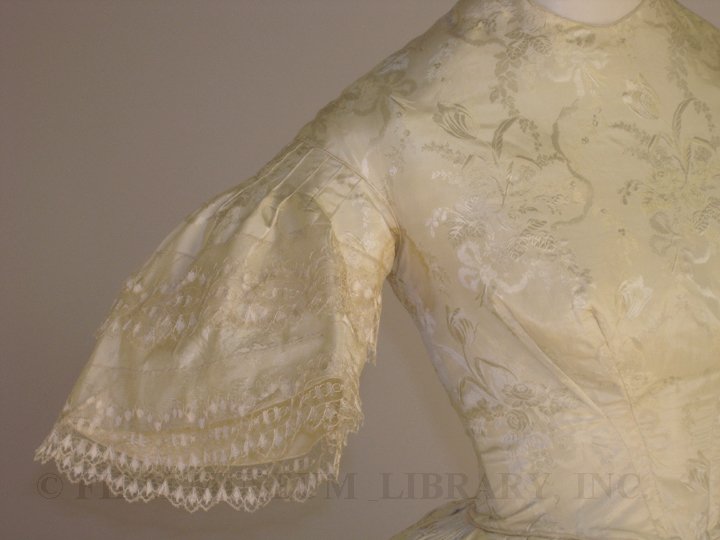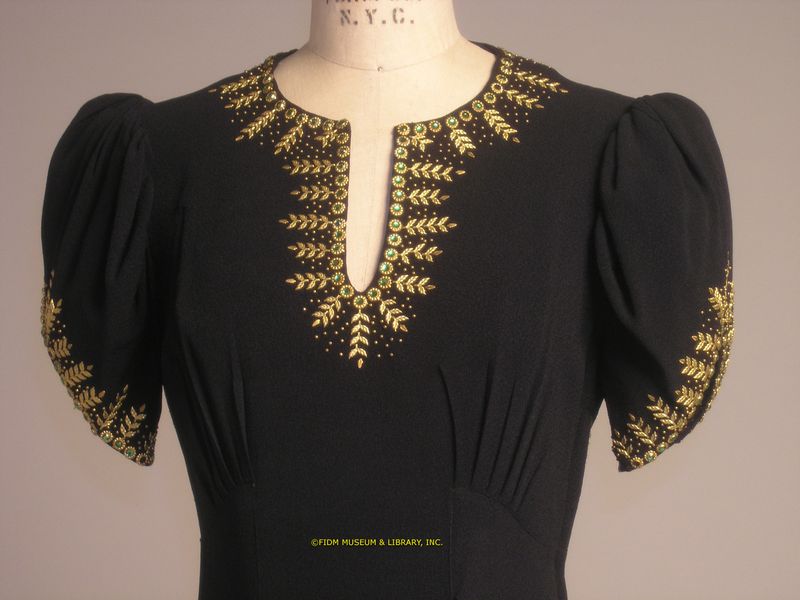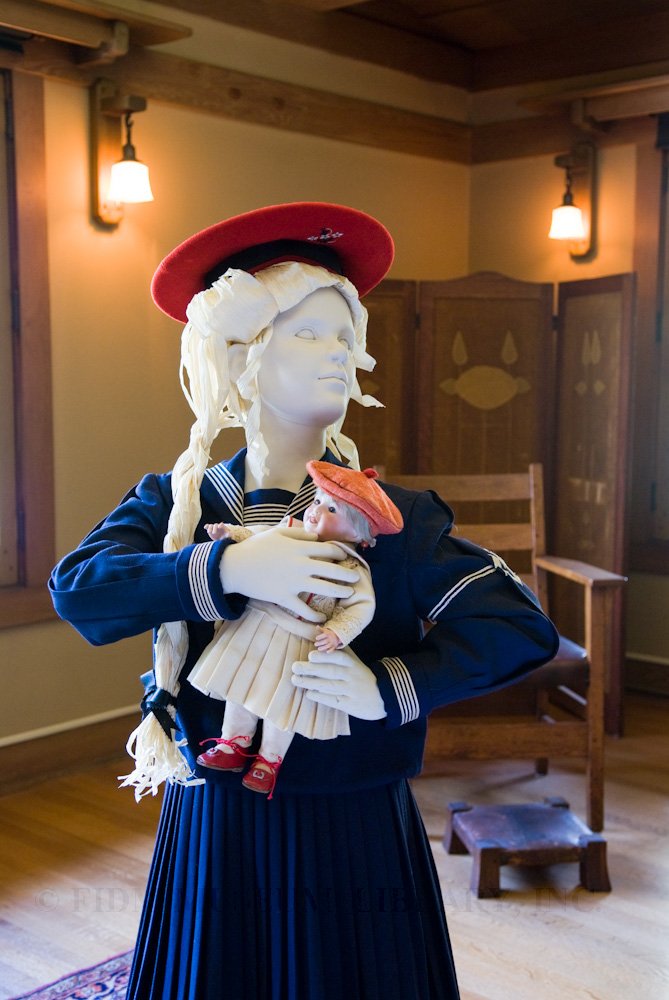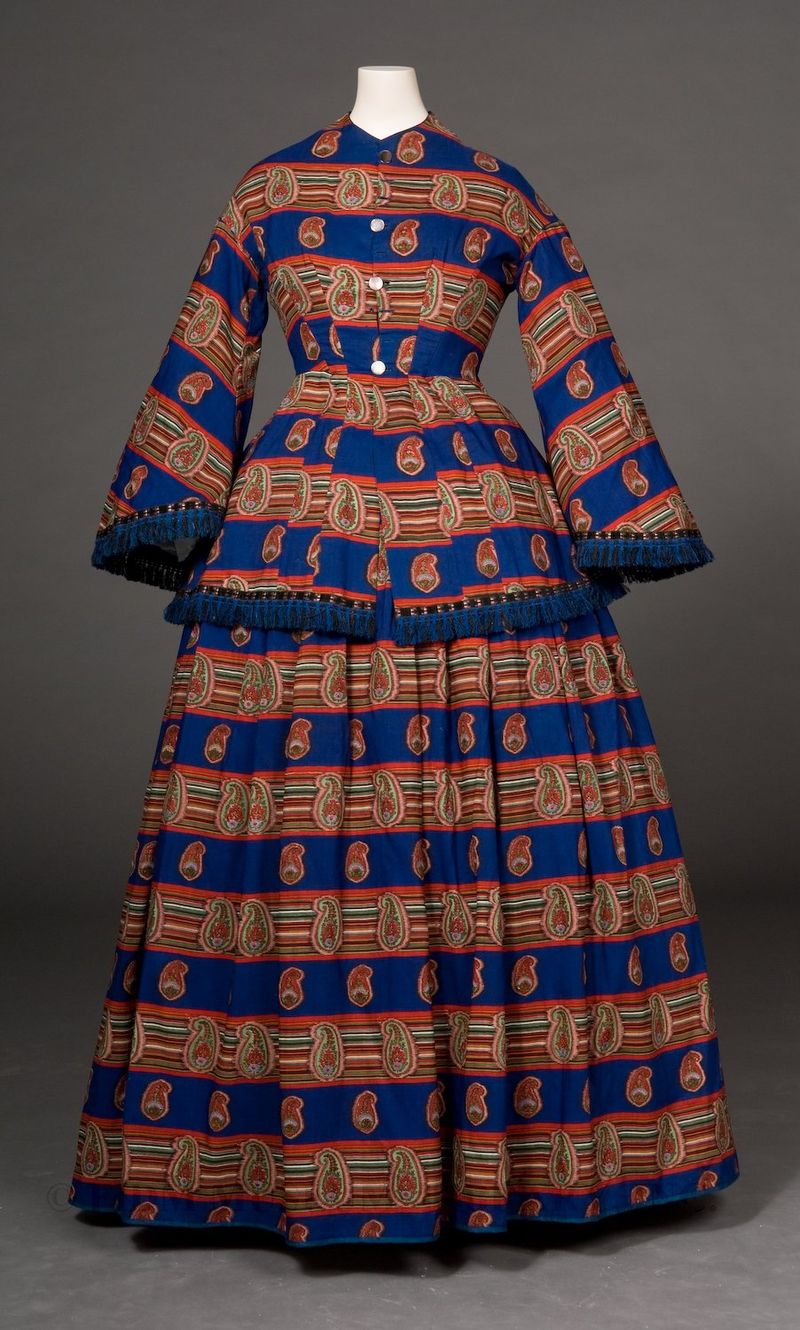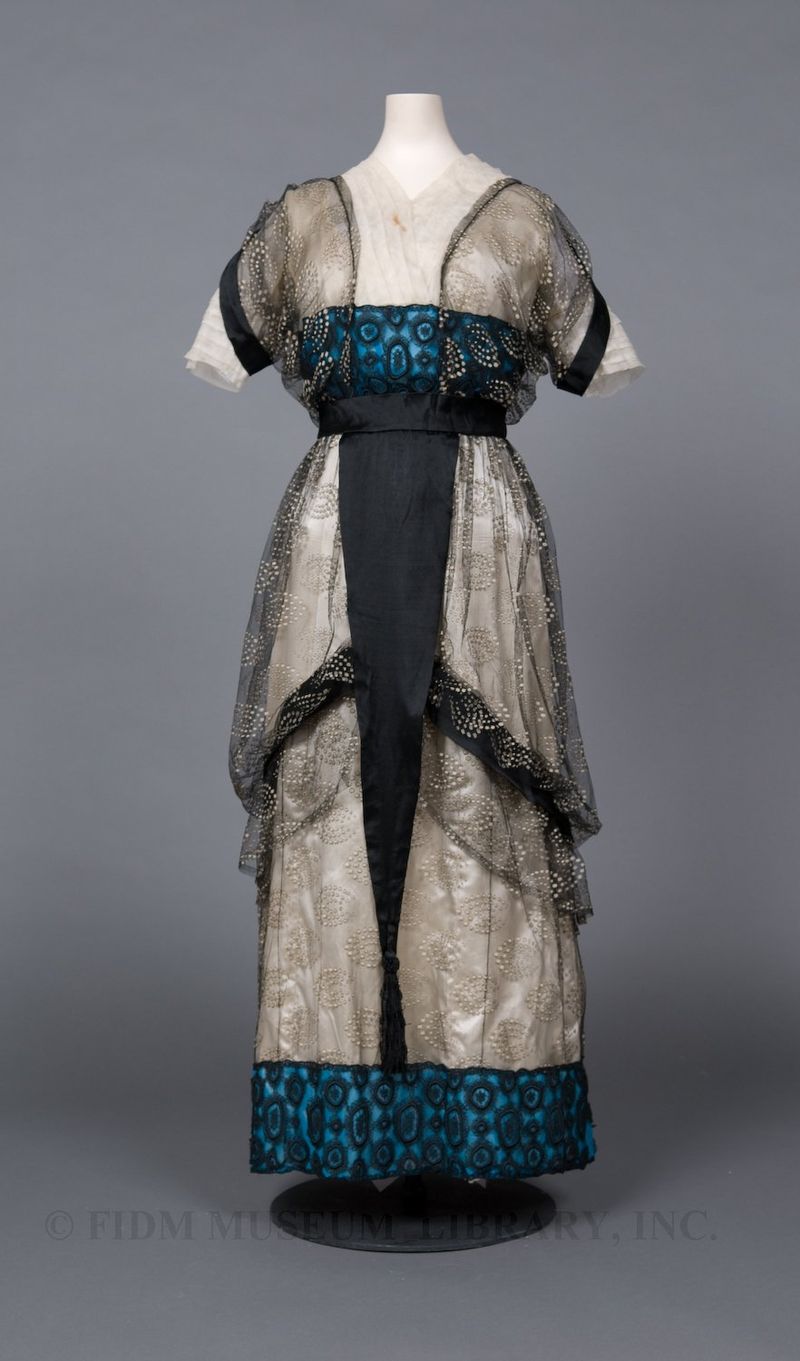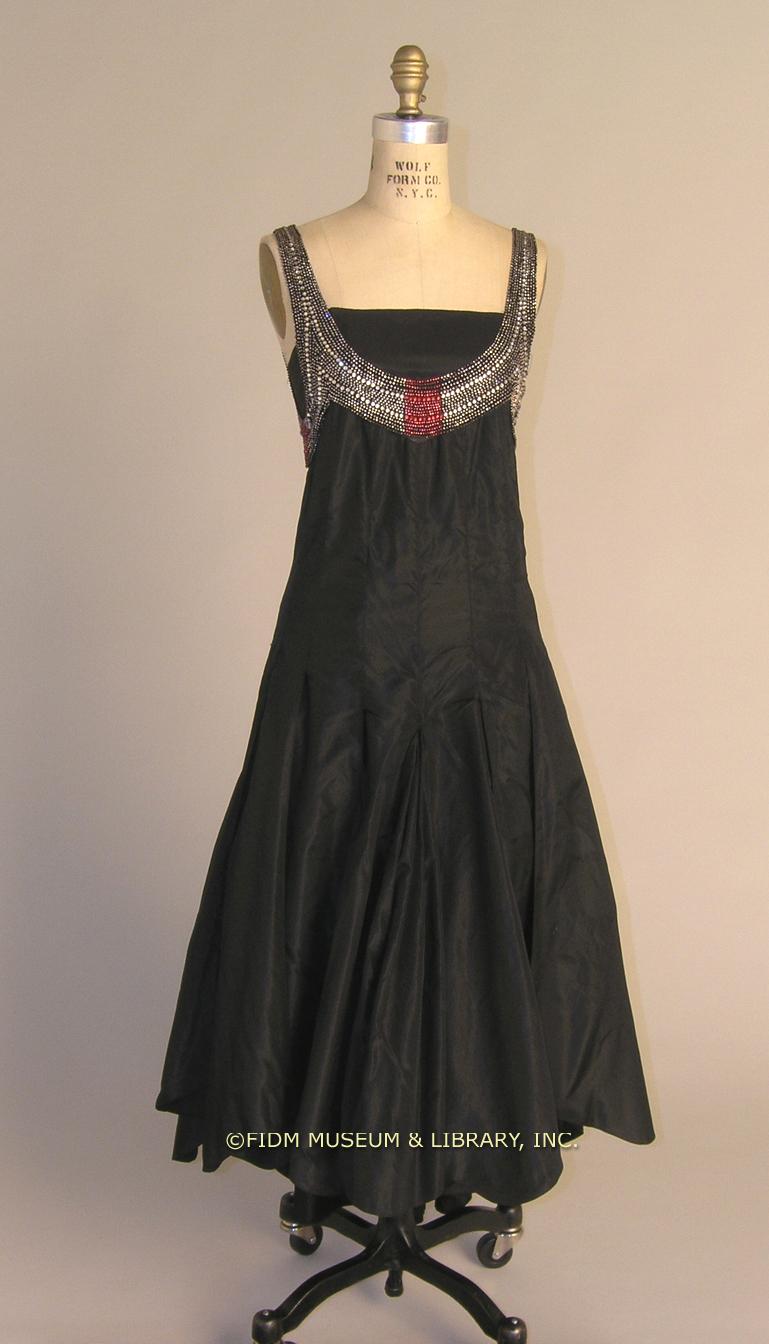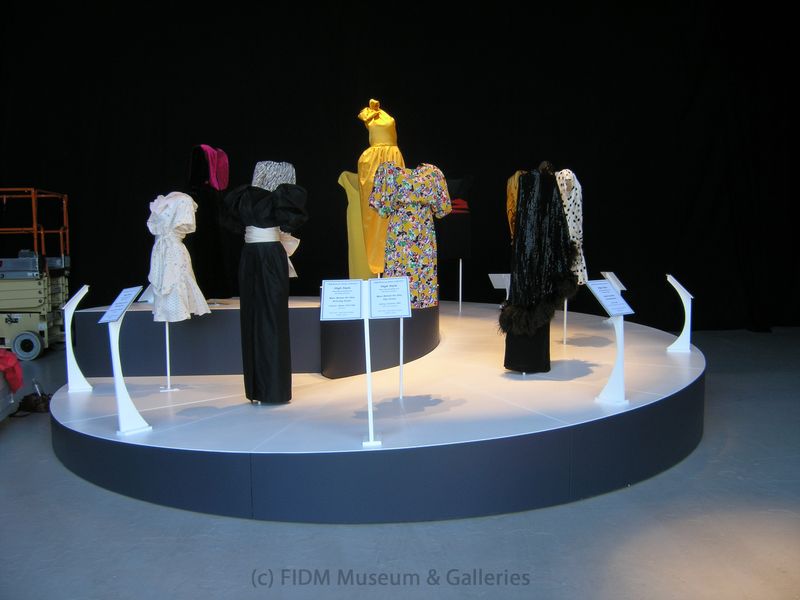This website uses cookies so that we can provide you with the best user experience possible. Cookie information is stored in your browser and performs functions such as recognising you when you return to our website and helping our team to understand which sections of the website you find most interesting and useful.
During the later years of the 1960s, the '"little girl" look was prominent in fashion. Many women dressed in loose, A-line shift dresses similar to those worn by little girls and accessorized with items (hairbows, headbands, flat shoes)... Read Article ››
James Galanos cocktail dress, c. 1955
During the 1950s, French haute couture was a dominant force in fashion. Elite American women traveled to Paris and purchased their wardrobes directly from renowned couturiers, while many others experienced haute couture through mass-produced versions of the... Read Article ››
Dress form, mannequin or floating form?
Regular readers of this blog have probably noticed the variety of forms we use to display objects from the FIDM Museum collection. When we photograph an object for in-house documentary purposes, it's usually dressed on a headless dress form or mannequin.... Read Article ››
Evening glamour, c. 1922
Evening dress c. 1922 Gift of Laura Stoneman 96.657.2 During the 1920s, nightlife was an important aspect of popular culture. In the United States, the Prohibition of alcohol led to the rise of speakeasies, where patrons could dine, dance and drink in an... Read Article ››
Sybil Connolly
The handling of homespun fabric in a sophisticated manner is the forte of Sybil Connolly.1In 1953, Irish designer Sybil Connolly was "discovered" by a group of American department store buyers and fashion reporters visiting Ireland. Having worked as... Read Article ››
Texture in fashion
Color and pattern are usually the first aspects of a garment to catch the eye, closely followed by silhouette. But what about texture? Though texture might not be the first thing we notice, it plays an important role in establishing the mood of a garment.... Read Article ››
Nail head dresses
Young cosmopolitans love nail-head glitter!1 Dresses embellished with decorative gold, brass or silver nail heads first appeared in the late 1930s. Usually seen on solid-color "background" dresses of wool or synthetic crepe, nail heads were used as... Read Article ››
Sailor suits
Beginning in the mid-nineteenth century, young boys and girls were often dressed in sailor suits. Worn as both school uniforms and everyday dress, the popularity of the style was sparked by this 1846 Winterhalter portrait of Albert Edward, Prince of Wales.... Read Article ››
Paisley day dress, 1854-56
Two-piece day dressPrinted wool challis 1854-56 Museum purchase 2004.5.40AB The elongated, tear-drop shaped motif decorating this vivid 1850s day dress is known as a paisley. A motif with ancient origins, the paisley is a stylized derivation of naturalistic... Read Article ››
Tunic dress, c. 1912
In 1912, fashionable dress was a combination of classical and orientalist elements. The silhouette was slim and high-waisted with an emphasis on the vertical line. A draped surplice bodice, waist sash or overtunic provided the requisite touch of drapery.... Read Article ››
The Little Black Dress
During the nineteenth century, black clothing was usually worn to signify a special status, i.e. mourning, religious piety, extreme poverty or a position of economic and social authority. Because many professional men adopted black suit coats after 1850,... Read Article ››
FIDM Museum Shows Off at Debut
Our post today was written by Meghan Grossman Hansen, FIDM Museum Registrar. Last month the FIDM Museum participated in the Fashion Institute of Design & Merchandising’s annual Debut fashion show—but calm your fears, there were no models sauntering... Read Article ››

